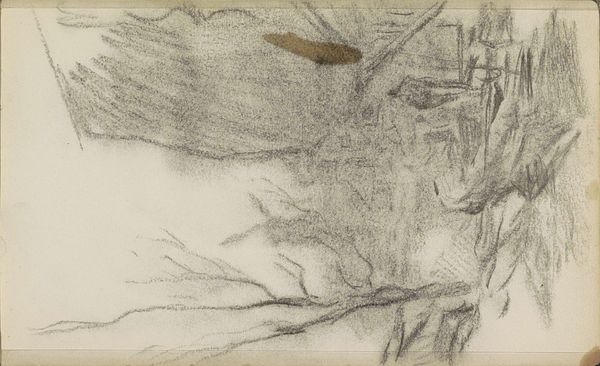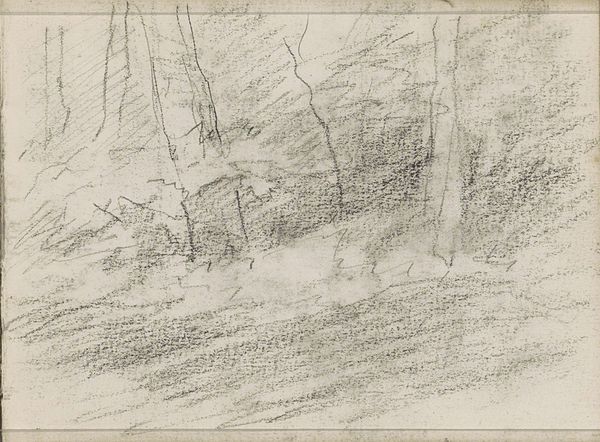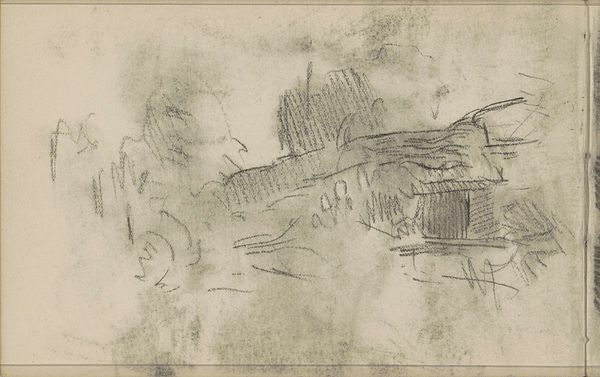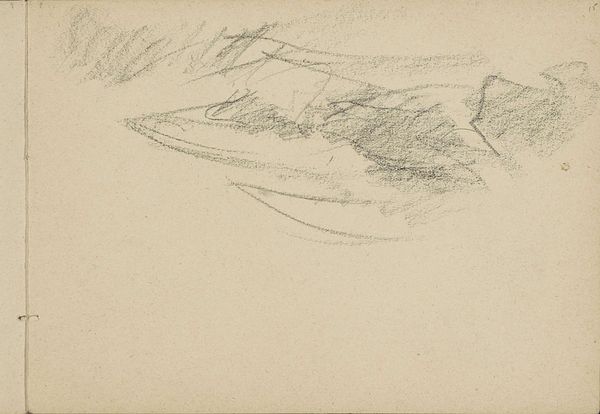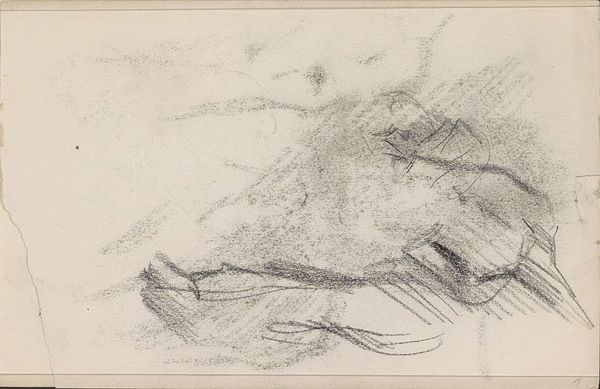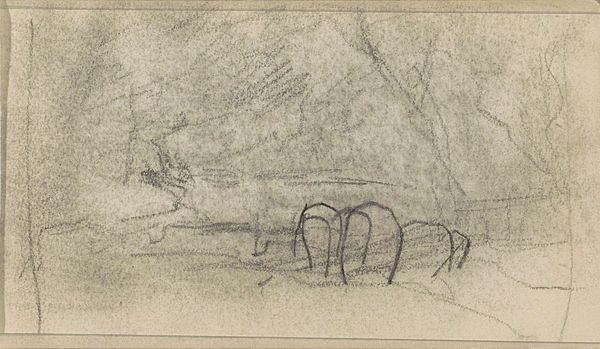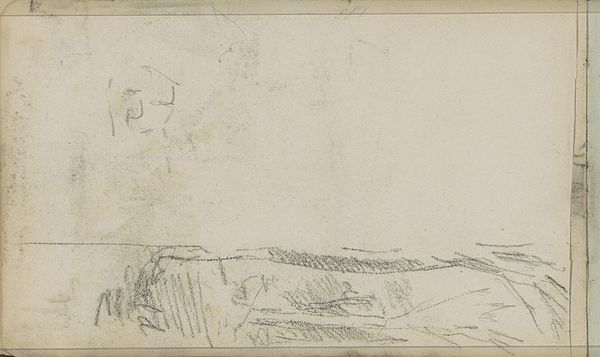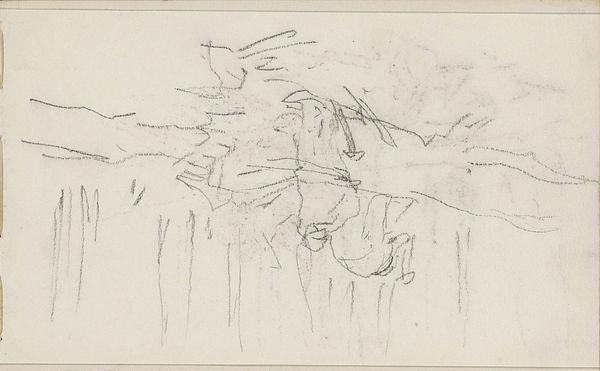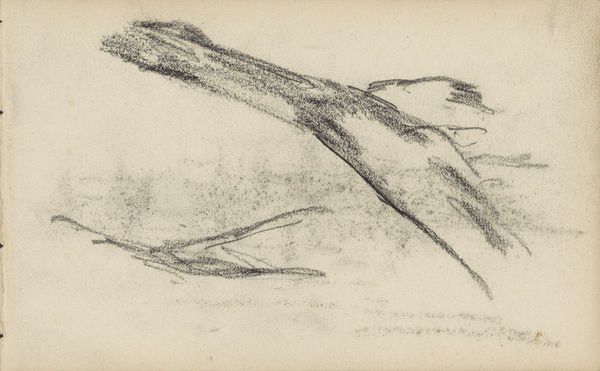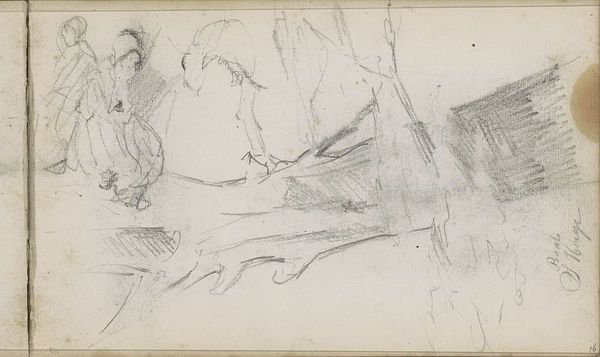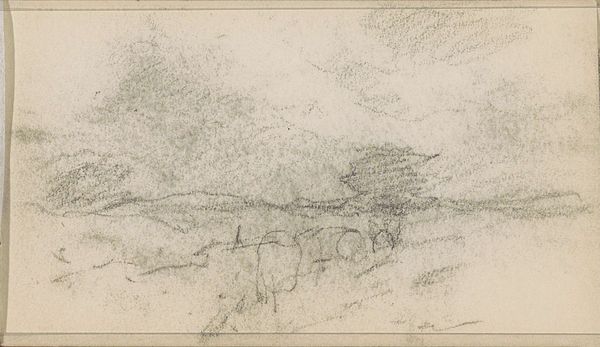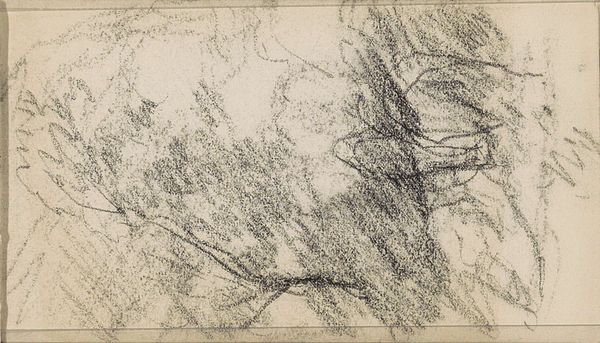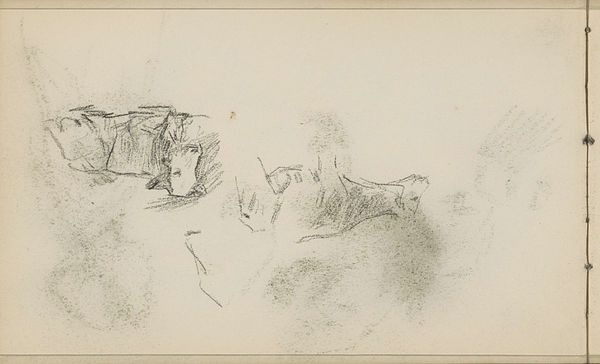
drawing, pencil, graphite
#
drawing
#
pencil sketch
#
landscape
#
pencil
#
graphite
Copyright: Rijks Museum: Open Domain
Editor: Here we have Johan Antonie de Jonge’s "Duinlandschap", a landscape drawn with graphite and pencil, sometime between 1901 and 1927. The sketchiness of it gives it a really raw and immediate feeling. What strikes you about it? Curator: What I find fascinating here is the very visible labor involved in creating the image. Look at the varying pressure applied with the pencil. You can almost feel the artist's hand moving across the page, building up the textures of the dunes. It invites consideration of how landscape itself is constructed and represented through such accessible, everyday materials. Editor: That's interesting, I hadn’t really thought about the physicality of the drawing process itself. I was focused on trying to decipher the image. Curator: Exactly. De Jonge isn't just depicting a landscape; he's demonstrating the act of *making* a landscape. Consider the societal value we place on finished paintings versus preparatory sketches. This questions those hierarchies. The graphite itself, extracted, processed, and formed into a tool, has its own history of industry and resource exploitation. Do you think De Jonge was conscious of these implications? Editor: Possibly? Or maybe he was simply interested in the most direct way to capture the essence of the landscape. Although the visible labor definitely makes me reconsider what’s usually left unseen. Curator: Precisely! By exposing the working process so bluntly, de Jonge almost democratizes art-making. It isn’t about refined technique; it is the action. It challenges the myth of the artist as some kind of aloof genius. Editor: That's given me a whole new perspective. I’ll definitely look at sketches differently now! Curator: I’m glad to hear it. Paying attention to the raw materials reveals art's inherent connection to industry and manual labour.
Comments
No comments
Be the first to comment and join the conversation on the ultimate creative platform.
